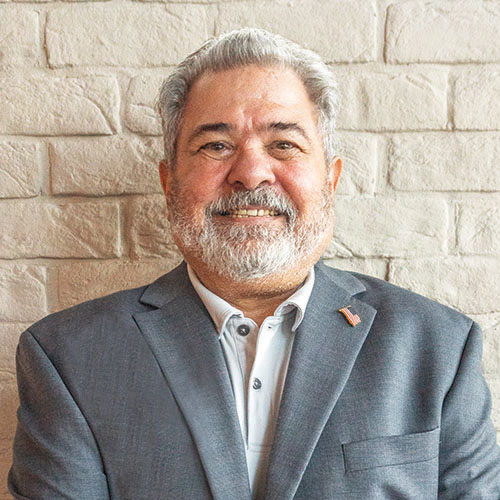In the race for Indian Trail Improvement District Seat 2, incumbent Supervisor Keith Jordano said this week that he knows he’s fighting an uphill battle against challenger Richard Vassalotti II.
“This situation is akin to David vs. Goliath,” said Jordano, placing himself in the role of David, though he is an incumbent wrapping up his first term on the board.
He cited numerous negative mailers, social media ads and a web site funded by outside groups, such as “Building Florida’s Future,” attacking him and Seat 4 incumbent Supervisor Betty Argue.
Building Florida’s Future is one of many political action committees (PACs) registered to William S. Jones of East Park Avenue in Tallahassee.
“I think developers are trying to buy the election,” Jordano said. “I don’t have a super PAC. I’m funded by neighborhood residents.”
Vassalotti came in first in a six-way primary election in August with 40.03 percent (2,543 votes). Jordano was second with 22.48 percent (1,429 votes), good enough to earn a spot on the Nov. 5 ballot.
Jordano said he is “happy and encouraged” by voter response because they know, “I’ll do what’s best for the people.”
“I’m not ready to give a concession speech or say I’ve won,” he said. “It’s in God’s hands and those of the voters. I hope they’ll educate themselves and not listen to the super PACs. Money doesn’t always win elections.”
Visit www.keithjordano.com to learn more.
IN HIS OWN WORDS
Why are you running for re-election to the ITID board?
This election is pivotal for the future of our community. We are facing significant annexation challenges on all borders, with developers and super PACs attempting to seize control of our board and roads. These outside forces, with the support of my opponent, threaten to undermine our quality of life. We need strong, committed leadership to stand firm in defense of our community.
What special qualifications do you have for the office?
I have a deep connection to our community as a 25-year resident of ITID, actively participating in local initiatives since 1999. My 40 years of experience as a business owner, combined with my service as a U.S. Navy Reserve veteran, have provided valuable insights into the challenges and opportunities our district faces. I’ve played an active role in improving our equestrian park, collaborating with residents and staff to address critical drainage and road concerns, and advocating for the re-opening of the culvert to restore Santa Rosa Groves’ second connection to the district.
What do you see as the biggest challenge facing ITID?
It’s the threat of annexation and the resulting traffic congestion from unchecked development. Developers and super PACs are attempting to influence our board of supervisors to push through projects that could compromise the safety, integrity and rural character of our community. Addressing these issues proactively is essential before they escalate further.
How would you protect residents from significant increases for road maintenance and safety concerns caused by cut-through traffic?
Developers must be held accountable for funding infrastructure improvements. I will also push for the creation of alternative traffic patterns to reduce cut-through traffic in our neighborhoods, preserving the rural lifestyle we cherish. Responsible growth is essential, and we must be cautious about overdevelopment that could compromise the character of our community. While my opponent has only recently begun discussing these issues, I have been working on them for years, advocating for policies that promote balanced growth and fiscal responsibility without placing undue burdens on our residents.
Do you support building, paving and expanding 60th Street North as a thoroughfare road from Seminole Pratt Whitney Road to State Road 7?
I support the development of 60th Street North as a vital thoroughfare from Seminole Pratt Whitney Road to State Road 7, but only under strict conditions. It is essential that this project actively restrict cut-through traffic on smaller neighborhood roads. Key measures should include implementing traffic-calming features, such as 40 MPH speed limits and speed bumps, while preserving our community’s rural character. Although ITID may not control SR 7, it’s crucial that the completion of this roadway aligns with our project to prevent an influx of unmanaged traffic. In contrast, my opponent has shown support for this initiative without the necessary safeguards… [focusing] on short-term gains over our district’s long-term interests.
Do you feel it is important to maintain ITID’s agricultural/residential/equestrian lifestyle? What steps would you take to do so?
Absolutely… it is vital to preserving our unique identity. Our rural values and equestrian heritage set us apart from other communities, and we must work to protect them from the pressures of overdevelopment.








